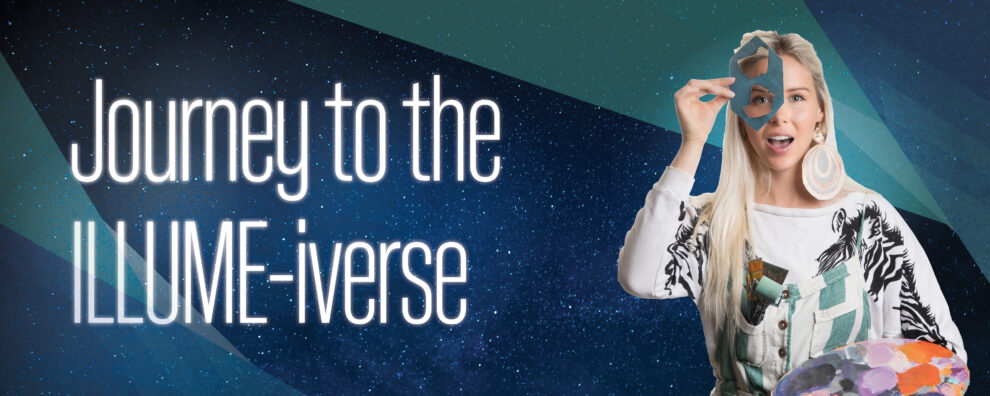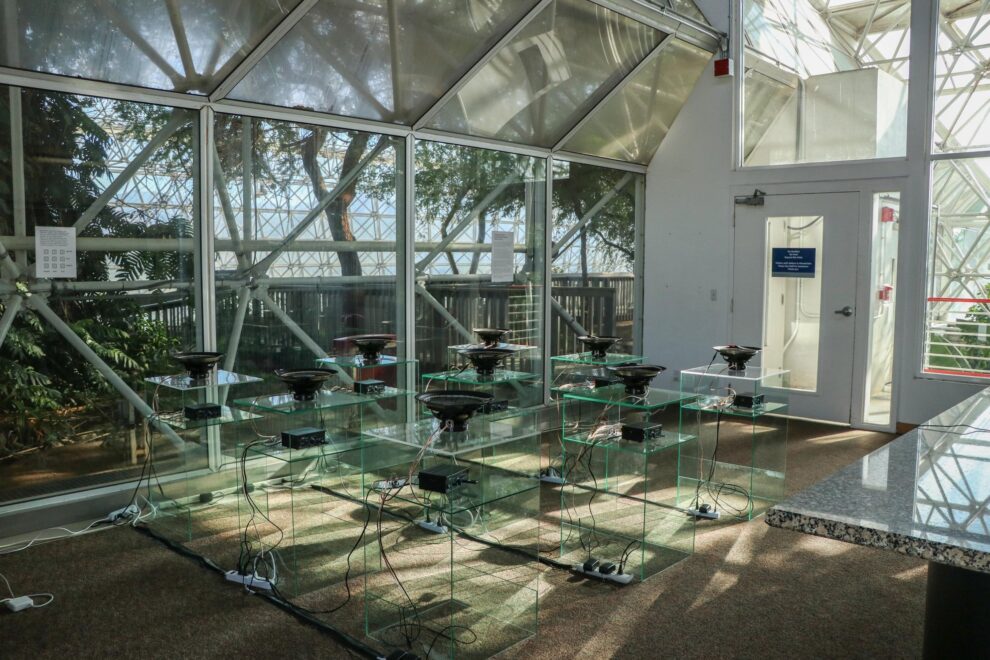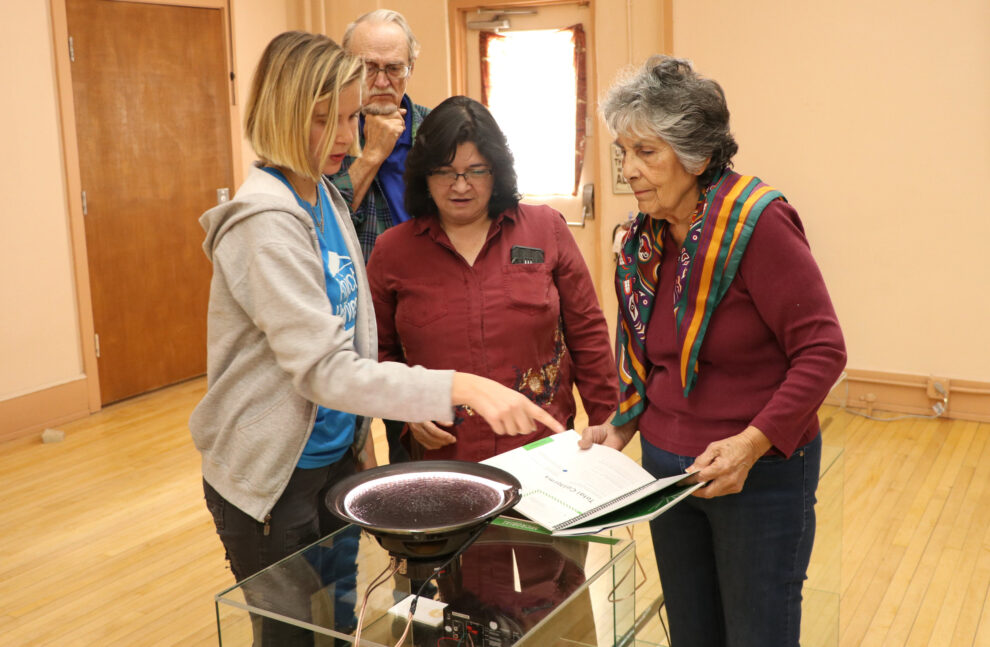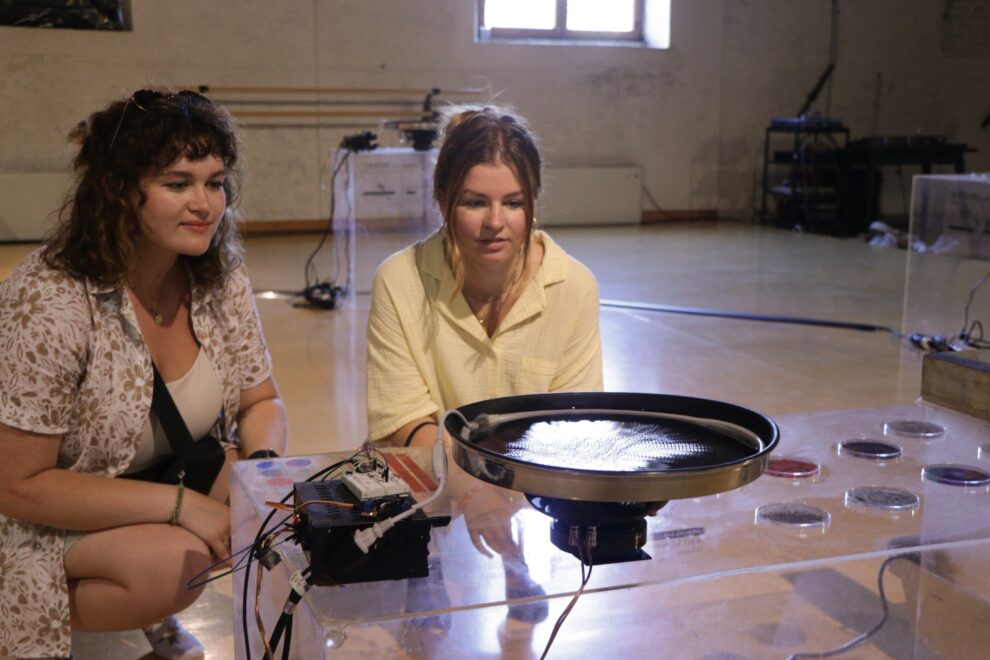
The journey to ILLUME looks different for each ILLUME-ie. For some, their technical expertise and passion for solving environmental issues are what have landed them here. For others, their paths may have looked very different and ILLUME is the place where their skills, expertise, and interests merged. In this series, I hope to look at some of our team members at ILLUME to learn how they got here, what impact they hope to leave, and what they would tell their younger selves if they had to do the journey all over.
To continue our series, I interviewed Dorsey Kaufmann, Graphic Designer at ILLUME. Dorsey has recently taken on a new role that supports the ILLUME Marketing and Business Development team to create visuals that help illustrate our research and findings for our team and for our clients. Dorsey’s path to ILLUME has been full of life lessons and wisdom that we can all learn from. Dorsey’s excitement, curiosity, and innovative thinking are just some of what make her such a valuable part of our team at ILLUME.
Tell us a bit about your role and what you do at ILLUME.
I am a graphic designer at ILLUME, and I work with our Marketing and Business Development team doing the visual branding for the entire company. A key part of my role is creating the visualizations for all the research we do at ILLUME and thinking through how to visually represent our work so that it is impactful to our clients and the stakeholders they communicate with. Most recently, our team has been designing ILLUME’s annual Magazine which will be published this summer and I have been working with our research teams to design the online interfaces to make it more interactive and exploratory. I am excited about the 2023 Magazine launch!
What did you want to be when you grew up?
I always tell people that for the first 25 years of my life, I ate, slept, and breathed dance. It was an important part of my life for as long as I can remember. Growing up, I always wanted to be a dancer or an artist – creative expression has always fueled my career choices and general passion for life.
My teenage years were difficult because I was a ward of the state – constantly moving through various placements every couple of months. Through that experience, I was exposed to how the foster care system fails so many youths, but as an outlet, I would start these little dance groups with the other girls who were “in the system” as a way to connect and have our own exploratory space to move freely and express ourselves within highly restrictive and supervised settings. I also started writing and drawing during that time.
My passion for dance and writing stuck with me through college. I took my first art and design class at the University of Nebraska and fell in love with visual communication. I could see I had a future in the field. What I loved about art and design was that the creative expression was there, but also with design, there is a functional side. As a designer, you must understand cultural cues and different ways of seeing and interpreting information.
I started to see design, dance, and these other creative forms of expression more analytically – that they are their own kind of language with encoded meaning, and the viewers are decoding the visual system you have created for them. For some people, the subjective is this scary, shifting place—where you don’t know how people are going to react and respond—but for me, I celebrate it. I think it is what makes us human, the fact that interpretations can vary widely based on audiences’ experiences and their cultural or socioeconomic backgrounds, identities, race, and ethnicity, among so many other factors. I want to continue to learn in that space and show a deep understanding through the way I design.
What brought you to ILLUME?
Before ILLUME, I worked as a multimedia designer for nearly 10 years and taught Infographics, Graphic design, Animation, and other courses at the University of Arizona (U of A). The U of A is where I went to graduate school for design and they brought me into a unique position where I would be mentored in the fine arts program while working in an environmental science laboratory under a National Science Foundation grant. From that joint position, I became immersed in the world of environmental science and science communication. The lab worked with mining communities throughout the State of Arizona and visualized contamination levels that were present in environmental samples. There were water, soil, and plant samples submitted to our lab by rural and environmental justice communities that lived close to Superfund sites. They wanted to know how the contamination was impacting their health and the quality of their environment (especially as it related to their decisions about what to grow and consume in their gardens). So, as part of my position, I created these individualized results booklets for all 160 participants. It was cool because we got to travel to these communities and hand deliver these booklets, so I could see how the visualizations impacted the way people navigated through their data and made decisions in their everyday life (which was part of the social science research questions we investigated in the project).
In addition to the booklets, I created an environmental art installation called Ripple Effect that ended up giving me the opportunity to travel and share the installation nationally and internationally outside of the project. This really shaped my interest in human-centered design, where tangible questions of people wanting to know information regarding their health and environment inform my design decisions and allows me to explore all the traditional and non-traditional forms the data can take. Using methods like equity-centered community design and formative evaluation, I learned that methods are tools we can use to approach larger systemic issues like environmental health, clean energy, and collective well-being. That was the entry point that opened me up to ILLUME’s work because I was exposed to social science research and environmental communication practices.


Globe-Miami, AZ

What do you hope to accomplish in your role at ILLUME?
With ILLUME, there is an opportunity for design thinking to be even further embedded into research processes – that’s an area I would be excited to expand upon. What is incredible is that within ILLUME, there is already such a solid foundation set and a keen eye toward centering humans and equity in the larger energy industry. It would be an intuitive direction, I think, to further employ human-centered design in our research communication, data visualizations, results, and findings so that they best serve, inform, and involve customers and/or community stakeholder groups – as well as the larger utilities and policymakers. I think it is an intuitive direction, especially now as it relates to all the federal funding being allocated towards the communities most impacted by climate change with the Justice40 initiative. What I respect is that ILLUME’s work isn’t detached from the questions of “how does this affect people in their daily lives” and “who are we designing this for;” and those are the same questions that I am interested in.
What advice would you give to your younger self, or to someone who is thinking about their career journey?
Avoid the tendency to think you have to box yourself in to fit a job position. That mentality can really limit your potential.
I am someone who wants to see the value in the work and the broader impact—so to my younger self, I would say—play an active role in shaping the position and the company at large, be excited to participate, and impart your ideas. You may be surprised by how receptive others are and how that enthusiasm can be propelled into new places of opportunity.
On the other hand, my younger self thought I had all the answers (laughs). So, the other side would be to listen more and not be afraid to rely on others. It is easy to think you know it all when you’re younger, but there are always people who are more experienced than you, who know more than you do, and will guide you when you don’t have all the answers – which will happen frequently!
That is how you begin to gain wisdom and clarity over time, you are not going to figure it out all on your own. For me, I feel like everything I know I owe to incredible mentors. In fact, that’s the other part of my advice, is that you have to be intentional about whom you are listening to and learning from. It’s about finding the people that you look up to that are blazing a path that you think is worth following.
